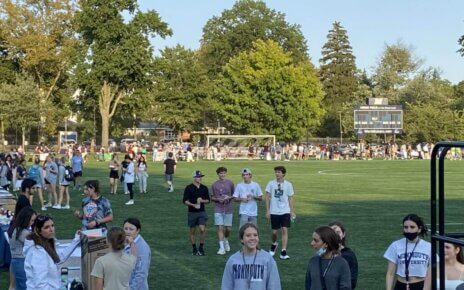Cochlear implants, first employed in the 1950s, aim to provide profoundly deaf and hard of hearing patients with a method of auditory functionality.
The disruption of air waves in the environment enter the ear, which is structured so that these air waves travel down the auditory canal and cause the small bones and cilia of the ear to vibrate. These pulsations continue past the tympanic membrane, better known as the eardrum, and into the inner ear where a spiral structure called the cochlea is situated.
The cochlea contains fluid and thousands of cilia which move, stimulated by the vibrations and enough movement sends a signal down the attached auditory nerve which connects to the brain. The cilia work together while each hair The brain is then able to interpret the original disruption of air waves as a sound and it then goes on to further decipher the meaning of that sound.
Many cases of chronic and temporary deafness involve patients suffering from damage to the tympanic membrane or the cochlea. Damage to the cochlea has a wide array of culprits, however it is primarily due to extensive exposure to loud noise. Such damage destroys the tiny hairs within the cochlea which unfortunately do not regenerate. Therefore, the damage is permanent and varying degrees of hearing is lost according to the amount of hair cells damaged.
While hearing aids work to amplify sounds, they can only function according to the amount of cilia within the cochlea and therefore, prove inefficient in more severe hearing loss injuries. Cochlear implants therefore prove useful as they are structured with parts that essentially take the place of the hair cells and work to detect, transmit, and interpret sound waves.
Until now, cochlear implants have only been able to provide a somewhat better quality of hearing for most kinds of speech. The advent of interpreting music has been introduced. This is a monumental step towards providing deaf people with a more realistic perception of sound.
Music, as opposed to speech, is much different, and in some ways more difficult, for our brains to interpret due to the involvement of numerous variables such as tone, pitch, beat, and timbre which all act simultaneously.
With hearing aids, music is barely decipherable and is interpreted as one jumbled sound merely amplified. Cochlear implants thus far would have been able to better distinguish the sounds, however, still be unable to differentiate the various aspects of music. Therefore, the innovative efforts to improve the current cochlear implants prove highly significant.
Adjunct biology professor professor Dr. Arthur Feintuch said that, “Considering the quality of life issue with regard to music, it is essential that this research be continued in earnest. Music is more than just sound. It is an essential component of humanity. From the earliest beginnings of man, music has been the cement of civilization.”
Although it is a profound endeavor, completely and clearly interpreting music through cochlear implants is just in its beginning stages. With time there will surely be advancements to come.
Sophomore biology major Nikita Bassi said, “It’s very admirable that researchers are working to improve cochlear implants to allow anyone with hearing damage to be able to experience music.”
She agreed that, “While it will take some time for researchers to make the optimal hearing device, I believe that with current advancements in technology, it will surely happen.”
Many are fascinated by situations such as these to observe our own human limitations. While we have become capable of curing various diseases and protecting ourselves from a myriad of illnesses, our advancements in technology have not been able to produce results equivalent to our natural born senses.
Senior biology major Malka Saba added, “It is amazing to imagine cochlear implants have come this far and perhaps this research will help to deplete the barrier between the deaf and non-deaf people.” In effect, we truly appreciate the miracle of our bodies and the pristine mechanisms by which they consistently function day and night.
IMAGE TAKEN from youtube.com




